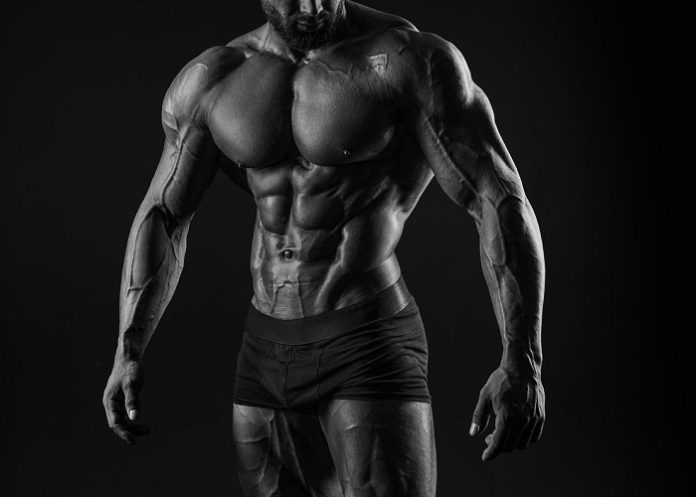The premature deaths – in 2021 – of more than two dozen professional athletes within a 12-month period, made headlines and stirred concerns about the safety of the sport. The youngest was 27-years-old.
Today, a wealth of research suggests that elite athletes tend to live longer than the rest of us, but the spate of early deaths among bodybuilders in recent years has raised numerous questions about the sport.
A recent study, led by researchers at the University of Padova in Italy, is the first to investigate the risk of sudden death among a large sample of male bodybuilders.
The findings highlight an alarming phenomenon that the authors say can no longer be ignored by athletes, medical associations, or sports organisations.
The analysis tracked more than 20 000 bodybuilders over an average of eight years, during which time 73 sudden deaths were registered at a mean age of 42.
Some were due to steroids or performance-enhancing drugs. Others were due to vehicle accident, murder, or suicide. But by far the most common cause of death was sudden heart failure, including 46 cases.
That is a low absolute risk for bodybuilders in general, however, that is not the case for the most elite professionals. Their risk of sudden heart failure was found to be more than 14 times higher than that of amateur athletes, which suggests that as the sport becomes more serious, it may also become exponentially more dangerous.
When looking only at the bodybuilders who participated in the highest-ranked international bodybuilding competition in the world – the Mr Olympia ‘open’ category – researchers found an “alarmingly high” death rate.
Out of the 100 elite competitors that took part in the competition over the years, seven died from sudden causes.
What's more, five of those deaths were presumed or confirmed cases of sudden cardiac death at a mean age of just 36.
“Current data are alarming,” the international team of authors concludes, “and sufficient to call for the development of specific recommendations for the prevention of sudden death/sudden cardiac death among bodybuilders, including the systematic implementation of bystander automated external defibrillators.”
“The analysis is limited by a lack of hard data, as autopsies were only available for about 10% of sudden cardiac deaths. This means there aren’t specifics on how and why many of these athletes died.
That said, the authors of the study, led by sports medicine researcher Marco Vecchiato from the University of Padova, suspect that extreme training, stringent dietary regimes, and frequent performance-enhancing drug abuse are risking the heart health of very high-level professional bodybuilders.
“These approaches can place significant strain on the cardiovascular system, increase the risk of irregular heart rhythm, and may lead to structural heart changes over time,” he said.
Available autopsies included in the study consistently showed left ventricle thickening and enlarged hearts among bodybuilders.
That aligns with a past autopsy study, which found that the mean heart mass of bodybuilders was nearly 74% heavier than normal reference values, and that on average, their left ventricles were 125% thicker than the average man’s.
Further research into the particular cardiovascular effects of bodybuilding is needed, including among female athletes, but Vecchiato says the message is clear.
“While striving for physical excellence is admirable, the pursuit of extreme body transformation at any cost can carry significant health risks, particularly for the heart.”
“Based on these data, the medical associations cannot ignore this health problem anymore and should collaborate with the respective federations and policymakers to promote safer participation.”
The study was published in the European Heart Journal.
Study details
Mortality in male bodybuilding athletes
Marco Vecchiato, Andrea Ermolao, Marco Da Col et al.
Published in European Heart Journal on 20 May 2025
Abstract
Background and Aims
Premature deaths of bodybuilders have raised questions about the safety and associated risks of this discipline. The main objective of this study was to analyse mortality risk in a large international population of bodybuilders.
Methods
Male athletes who performed International Federation of Bodybuilding and Fitness (IFBB) competitions between 2005 and 2020 were identified and classified according to age, division and level. A standardised web-search, tailored to detect deaths, was performed for each athlete using specific keywords, with follow-up through July 2023. Mortality rates have been calculated both as the overall incidence rate during the monitored period as well as the annual incidence rate of those who participated in at least one competition within the previous year, i.e. currently competing athletes.
Results
A total of 20 286 athletes competing in 730 IFBB events were identified with an average follow-up of 8.1 ± 3.8 years (i.e. 190 211 athlete-years of surveillance). During the study period, 121 deaths were identified: 73 were considered sudden deaths, of which 46 were classified as sudden cardiac deaths (SCD), including 11 currently competing athletes (mean age 34.7 ± 6.1 years). The incidence of SCD in currently competing athletes was 32.83 cases per 100 000 athlete-years. Available autopsies of SCD cases consistently showed cardiomegaly and ventricular hypertrophy. Professional bodybuilders had a higher risk of SCD than amateurs (HR 5.23 [3.58-7.64]).
Conclusions
The results of this study should alert the bodybuilding and medical communities to the need for improved preventive measures to promote safer sports participation.
European Heart Journal article – Mortality in male bodybuilding athletes (Open access)
See more from MedicalBrief archives:
Male body image and the potentially deadly pursuit of muscle mass
Body-building protein supplement has potential for brain harm
Problematic alcohol use linked to legal performance-enhancing substances
Older men turning to health-threatening steroids to stay young

